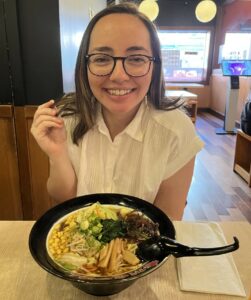
Me! Cait Kearney
Food for Thought… And to Eat!
Hi, I’m Cait!
I’m a communications specialist at the Penn Memory Center (PMC), and I’m attending this year’s Alzheimer’s Association International Conference (AAIC) in Amsterdam to cover breaking news on Alzheimer’s therapies and Penn research highlights.
I’m also a huge foodie, so over the course of the conference I will be keeping this blog page to make a post each day of the conference reflecting on AAIC and (at least!) one interesting thing I ate.
AAIC is happening July 16-20. I will be attending over a dozen research presentations and have a list of foods to try, including bitterballen, stroopwafel, and snert! Stay tuned for my daily posts.

AAIC 2023 Exhibit Hall
July 16 – Day 1 of AAIC
Synonyms for big
From the moment I walked through the doors of the convention center, various words for “big” were running through my mind. The conference center is huge. The attendance is substantial (over 10,000 people). The number of posters and presentations is awesome. But also, the era of the field that we are in is big. It’s huge, significant, and you could feel it in the air at AAIC.
At the welcome ceremony (which featured a hilariously kitsch Dutch-themed dance performance), Chief Scientific Officer of the Alzheimer’s Association Dr. Maria Carillo said in her opening remarks that this time in Alzheimer’s research “is the beginning.” She mentioned the need for “better, safer, and easier to administer” drugs and the importance of social and behavioral interventions. Her speech was a reminder of both how far the field has come and how far it has to go. I found myself reflecting on my position as a communicator in this space.
Lecanemab was fully approved, donanemab shows promise, biomarker science is developing rapidly. It is critical that I, and others in my position, work to provide accurate and frequent news and updates to patients, families, and the public on the developments in dementia diagnostics and treatments.
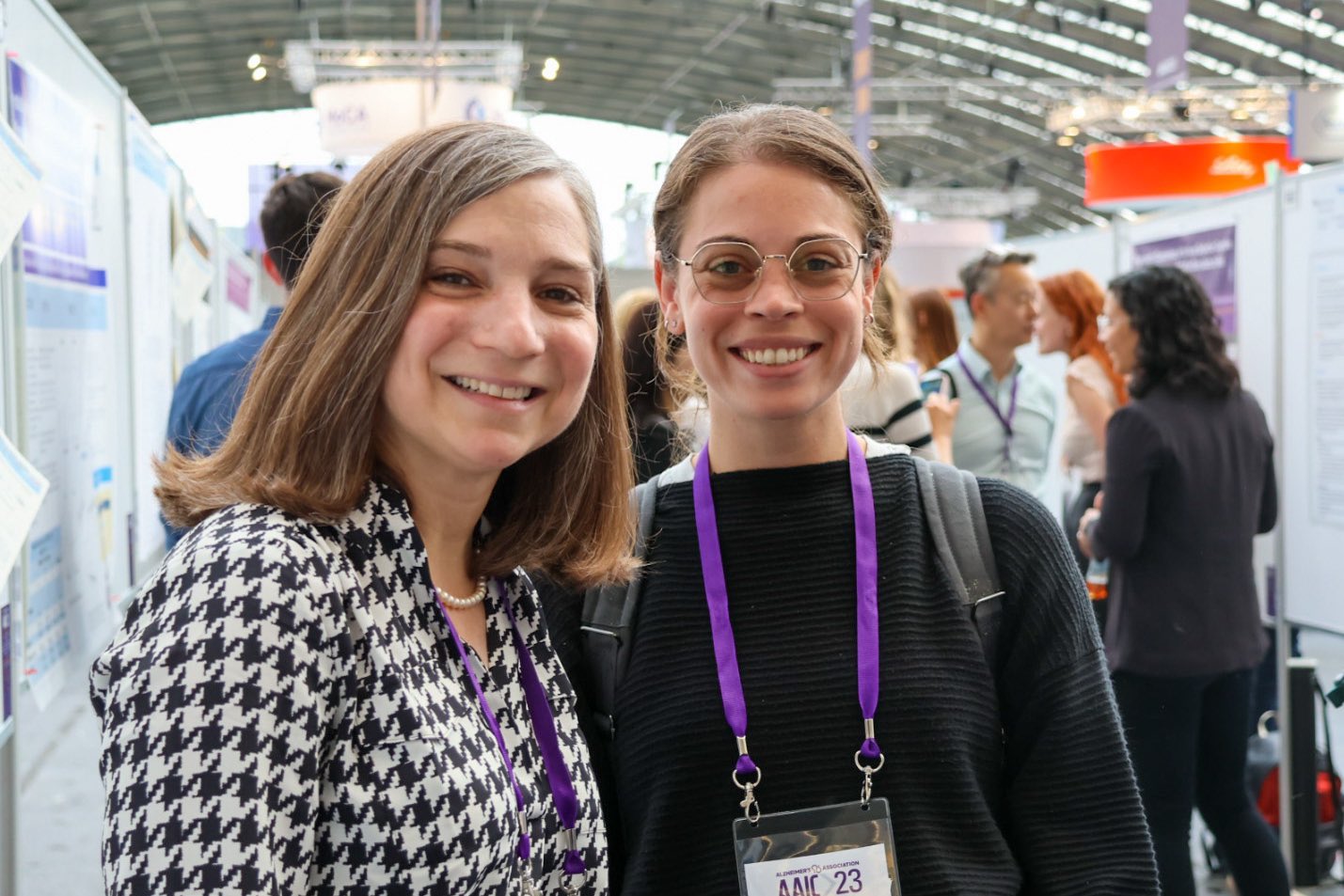
Dawn Mechanic-Hamilton and Leah Fein
The rest of the day passed quickly, and I had the opportunity to learn more about the work of a number of Penn researchers, including PMC Director of Neuropsychology and Cognitive Fitness Programs Dr. Dawn Mechanic-Hamilton. You can read more about her work on digital cognitive testing here.
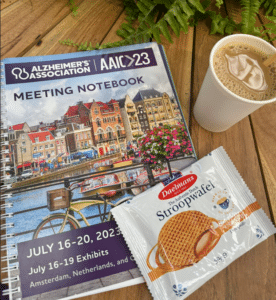
Stroopwafel and caffeine break
Food review: Stroopwafel
According to the internet, stroopwafel originated in the late 18th century when bakers in Gouda, Netherlands, starting repurposing their scraps and adding syrup. The Alzheimer’s Association gave them out after lunch, and it was a delightful snack. I think they would be the perfect thing to eat with a warm tea on a chilly day!
________________________________________

PMC Executive Director Felicia Greenfield, me, Leah Fein, and Associate Director of Social Programs Meg Kalafsky
July 17 – Day 2 of AAIC
Collaboration and togetherness
If you want to see evidence of humans working together for the common good, attend AAIC. Nearly every verbal presentation I attended revealed cross-institution/organization work, including international collaborations.
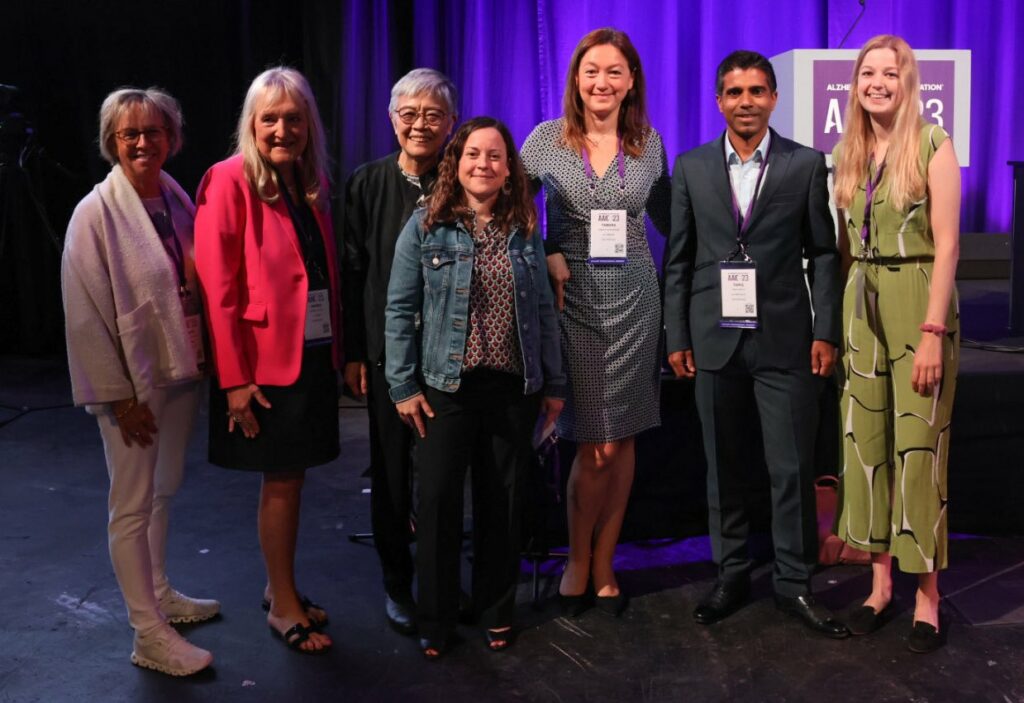
Virginia Man-Lee, Sílvia Porta, and fellow researchers
Penn researcher Dr. Sílvia Porta had a verbal presentation at a featured research session, and Dr. Virginia Lee, world-renowned UPenn scientist, was the session chair. Before the session started, I approached Drs. Porta and Lee to take their picture. Other researchers who were presenting were standing with them and quickly backed away to move out of the picture, but Dr. Lee heavily insisted everyone be in the photo. They joined in, and the whole scenario felt like a metaphor for how our researchers approach the problems they want to solve. They lead, they cooperate, they collaborate.
I proudly witnessed Penn’s collaborative spirit many times the past 48 hours, such as when I saw Amanda Denning passionately discussing her work with various (non-Penn) researchers. And when I bumped into a Temple researcher I’d never met before, and we discovered we had a number of mutual connections because the leaders of our respective groups had joined forces to develop an intervention for people living with dementia.

Amanda Denning talks about her research during poster session
By far, the greatest moment of the day was the release of the full donanemab trial results, which were announced at AAIC. The results showed that donanemab significantly slowed memory loss and cognitive decline in people with early symptomatic Alzheimer’s disease. This research would not be possible if it weren’t for the willingness to collaborate and the commitment of Alzheimer’s research participants and their study partners.
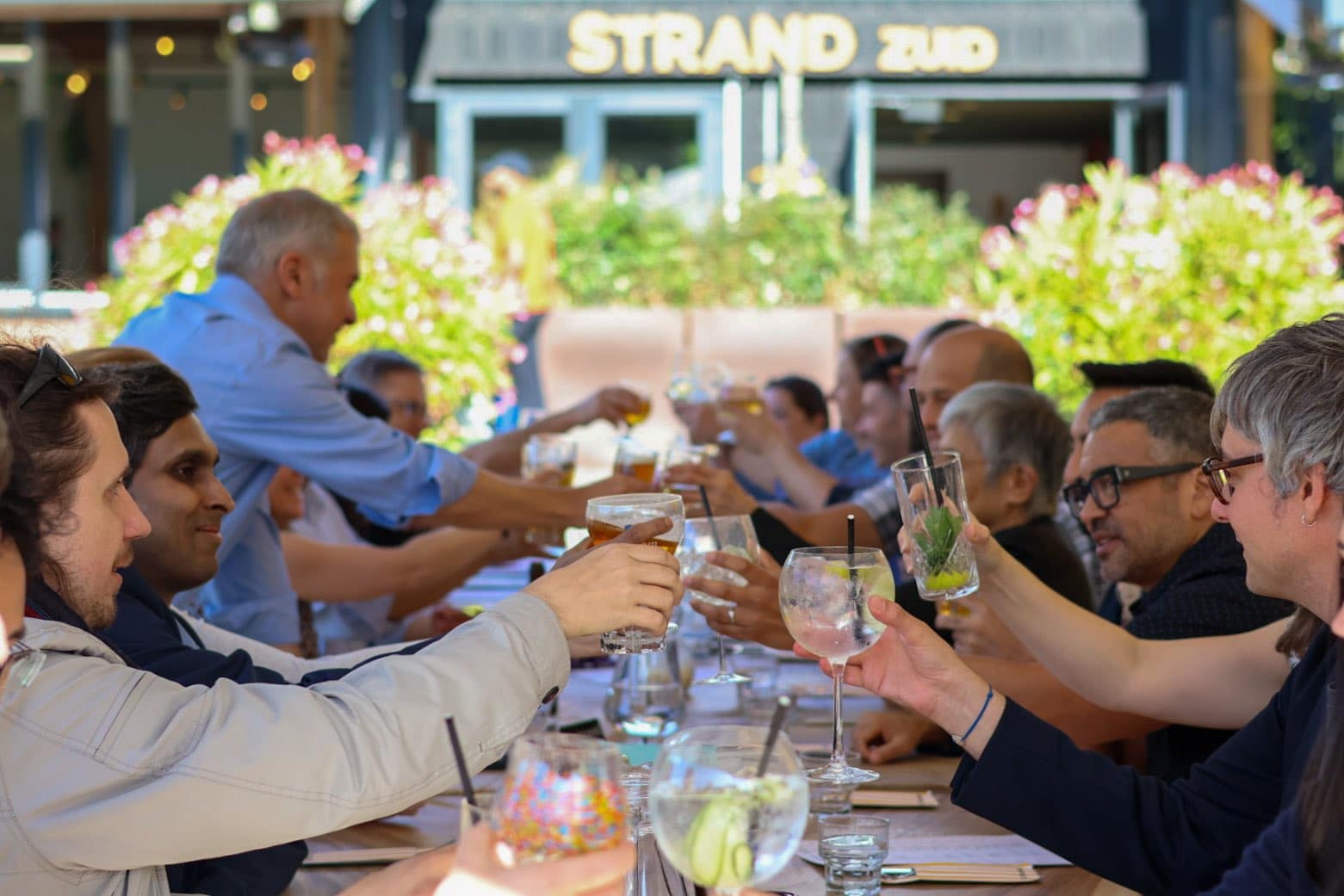
Penn dinner at Strandzuid: Cheers to being together!
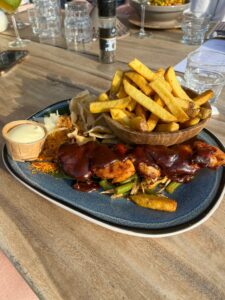
Chicken satay with a side of frietjes and mayo
After the last research session of the day, 30+ Penn people gathered at a restaurant for dinner. PMC Co-Director Dr. Dave Wolk made a short but sweet toast about being together, Dr. Lee chimed in that we should all feel lucky to be there (which I definitely do!), and the rest of meal was full of laughter and light-hearted conversation.
Food review: Frietjes with mayo
I have only been in Amsterdam for three days, and I’ve somehow managed to consume five different types of fried potatoes. Who knew you could fry one vegetable so many different ways? The Penn dinner was the first time I had ever had fries with mayo. It was good, but I think I prefer ketchup!
________________________________________

Dr. Sindhuja Govindarajan presents at AAIC
July 18 – Day 3 of AAIC
Communicating science
Hundreds of people packed the conference hall to attend a featured research session presentation by Penn researcher Dr. Sindhuja Govindarajan. Unlike other presenters, Dr. Govindarajan started off her presentation with a pop quiz of neuroimaging scans for the audience. It was amusing to see attendees snap to attention and lean forward in their seats to more closely examine the screen, their competitive nature showing. Dr. Govindarajan followed the quiz with an intriguing overview of her research on 3D mapping of Alzheimer’s pathology using imaging. She had appealing, colorful slides and kept the attendees on their toes with her clever jokes. As a communications person, I greatly appreciated the way Dr. Govindarajan engaged the audience. Even information being passed scientist-to-scientist can benefit from rhetorical strategies like visual aids and humor.
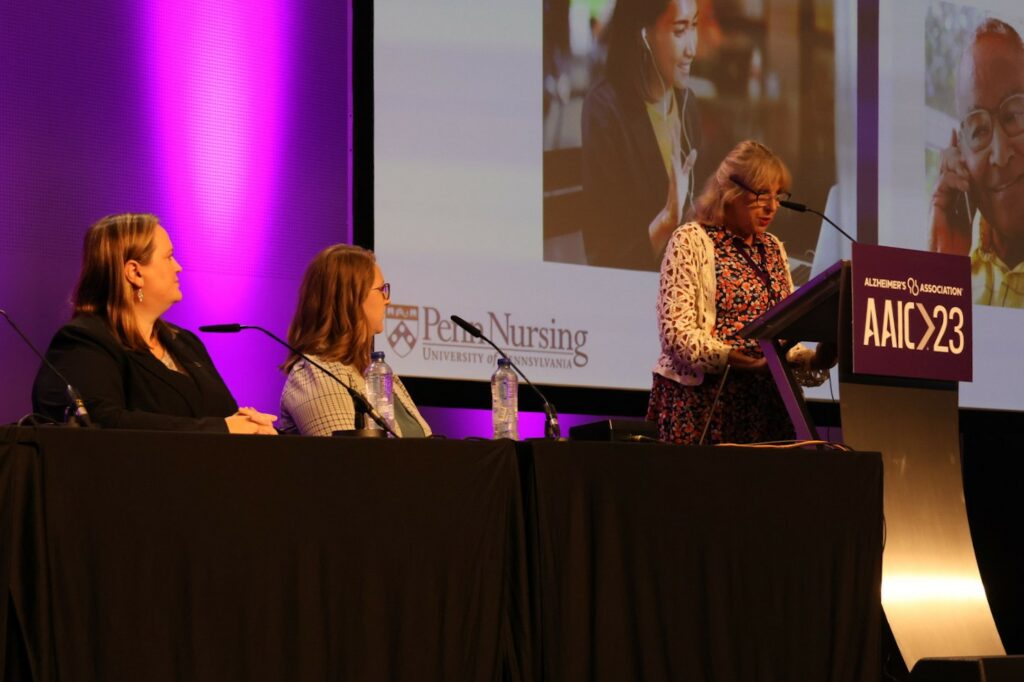
Dr. Nancy Hodgson talks about her research on the Alzheimer’s Association Helpline
Today, I also attended a presentation by Dr. Nancy Hodgson from the Penn School of Nursing on her assessment of the Alzheimer’s Assocation Helpline. Like Dr. Govindarajan’s featured research session, this session was unique regarding communication; not because of Dr. Hodgson’s talk, but because two caregivers asked questions during Q+A session. The vast majority of AAIC attendees are researchers, and the work presented is often extremely technical and is difficult to follow if you are not trained in that area of study. However, the caregivers asked thought-provoking and challenging questions. Witnessing the caregivers and researchers have generative conversation about the research exemplified the essential role of participants in research even after their data has been collected.
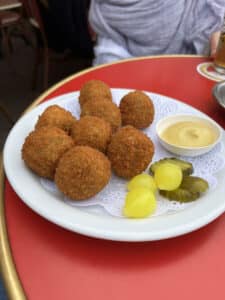
Bitterballen
Food review: Bitterballen
My first bite into a bitterballen was truly one of the most surprising bites of my life. Originally, I thought bitterballen were deep fried cheese bites. Then someone described them to me as Dutch meatballs. So you can imagine the shock I experienced when I bit into the fried ball and it tasted like gravy and turkey stuffing. The outside is crispy, but the inside is gooey, like something would be with a lot of roux. Dipping the ball in the mustard it was paired with definitely elevated the taste. My conclusion: bitterballen are a tasty bar food!
________________________________________
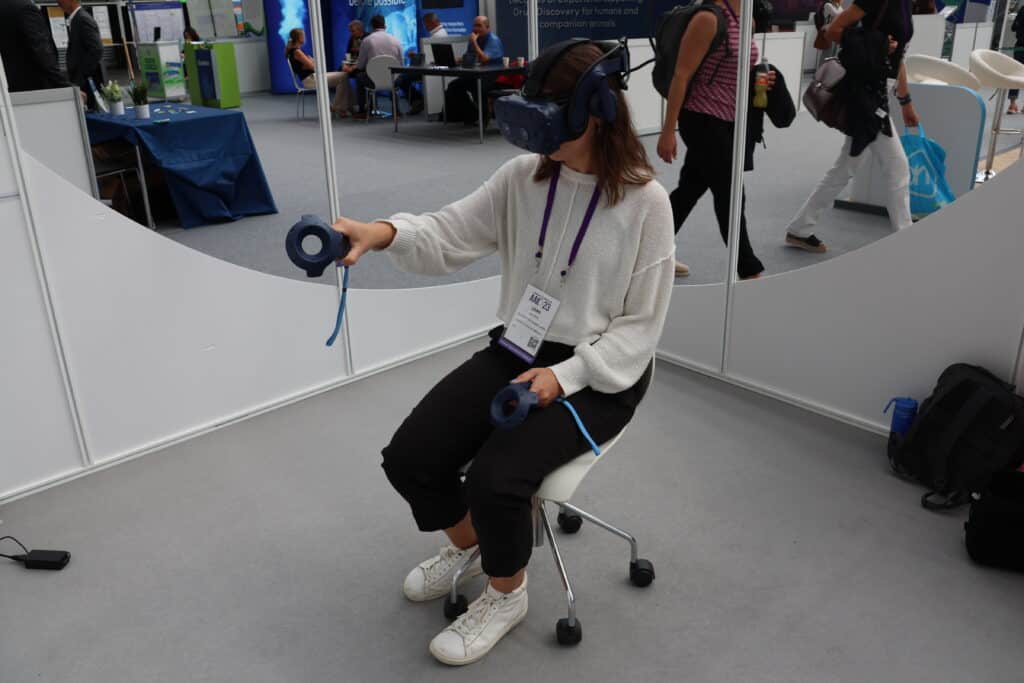
Leah Fein trying out VR cognitive testing
July 19 – Day 4 of AAIC
Booth browsing
The highlight of the day was trying out a virtual reality (VR) cognitive assessment at one of the vendor booths. Leah volunteered as tribute to undergo the assessment. She completed attention and memory tasks via an air traffic controller simulation and was given a multi-page print of her results. She reported that the assessment was more difficult than she expected and that learning the results was “embarrassing.”
Off the top of my head, I can think a lot of potential barriers to using a VR headset in dementia research. What if it makes participants dizzy or uncomfortable? What if participants have never played video or computer games? The learning curve would be steep. The vendor said they envision the technology being used years from now, when the generation that has never used a pencil and paper needs cognitive testing. Interesting!
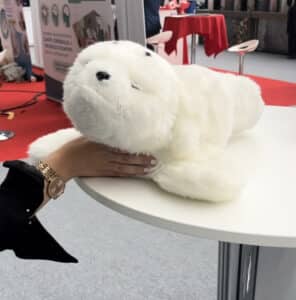
Paro the seal
On my saunter through booths of the exhibit hall, I had the chance to interact with Paro the robotic, therapeutic seal. He responds to touch and can have a calming effect on its owner. I learned that some insurances even cover the cost of Paro because he is considered a medical device by the FDA. Paro is a neat concept, although it has raised ethical concerns in the past.
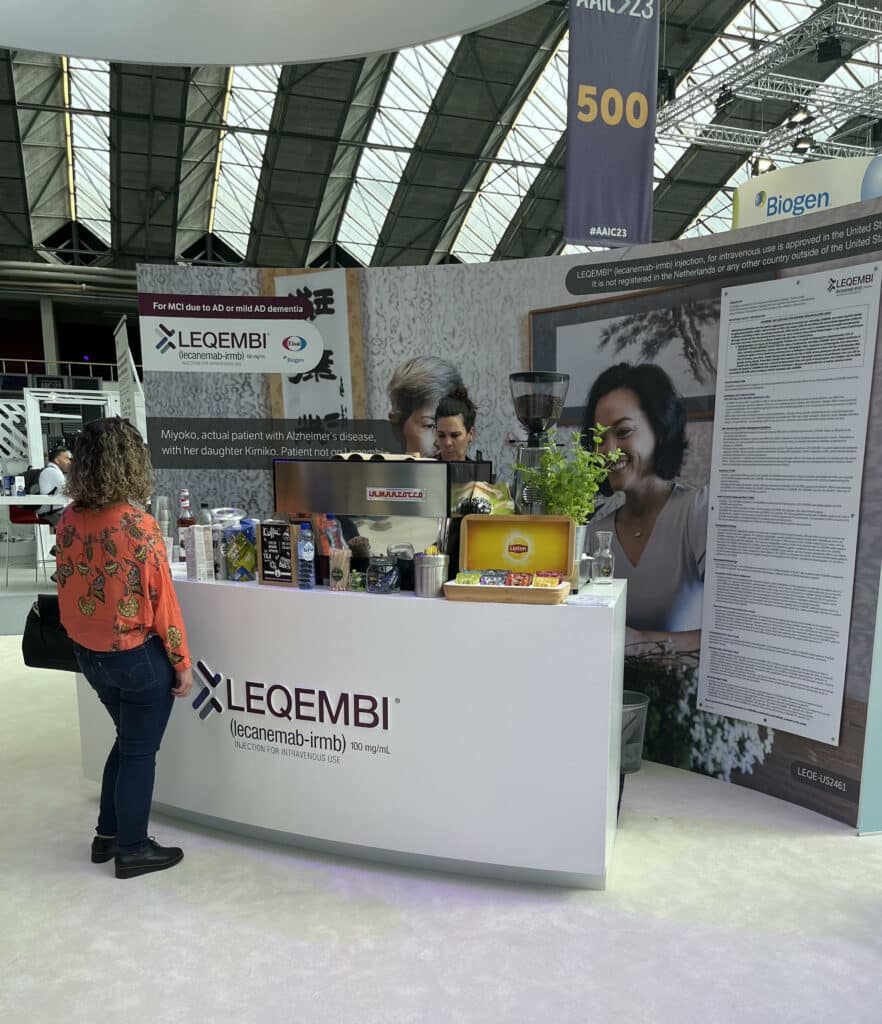
Leqembi coffee bar
Lastly, I have to mention that there is a Leqembi-themed coffee bar. I never thought I’d see a barista with the backdrop of an Alzheimer’s drug label.
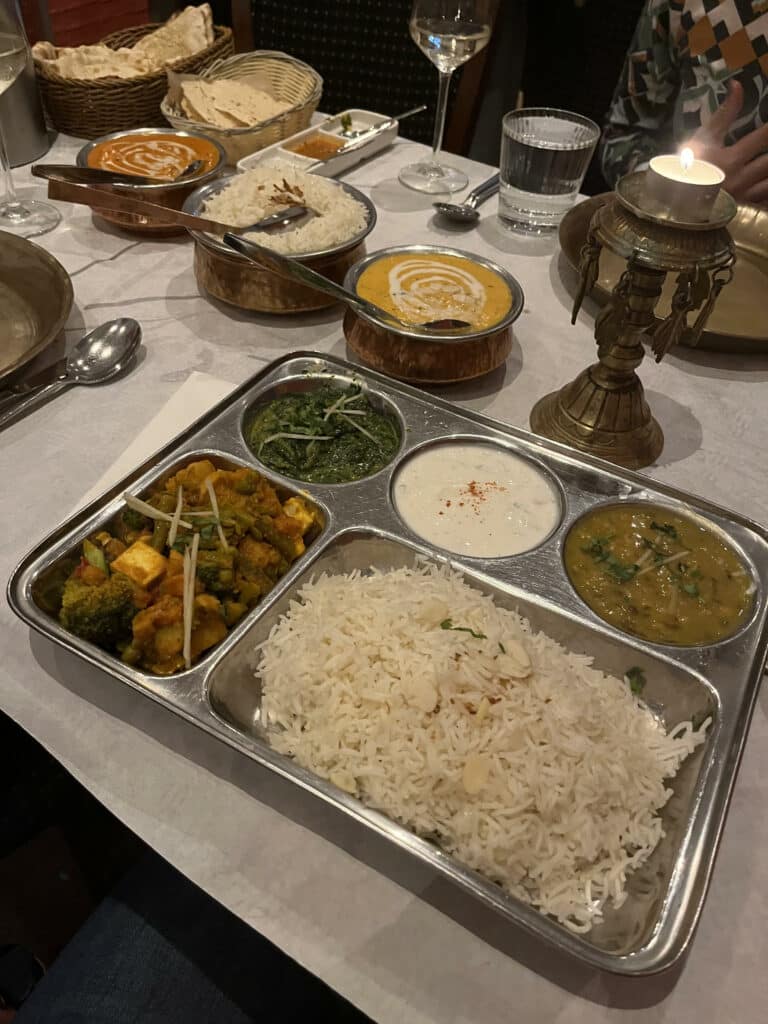
Dal Bhaat Tarkari
Food review: Dal Bhaat Tarkari
Amsterdam has a culturally rich food scene, so I was excited to venture outside the traditional Dutch food and try Nepalese cuisine for the first time. I ordered dal bhaat tarkari, a popular vegetarian dish of the Nepalese. It included rice, lentils, and vegetables. The whole meal was flavorful and delicious. It was no wonder the restaurant had such good ratings!
________________________________________
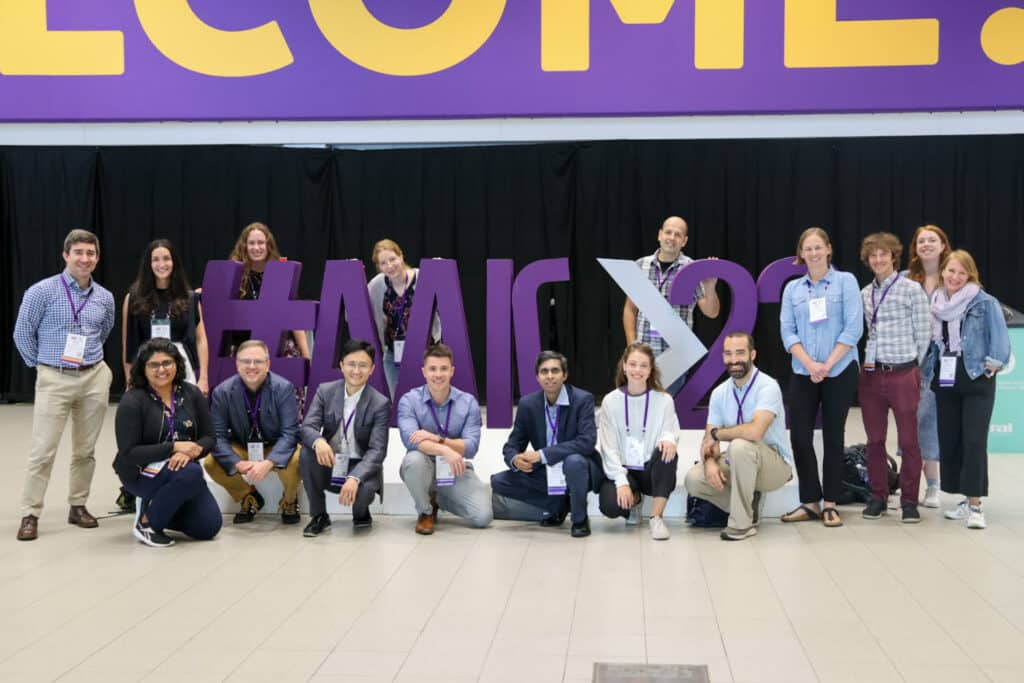
Penn researchers at #AAIC23
July 20 – Day 5 of AAIC
Wrap-up
AAIC was a great experience. I feel grateful that I had the opportunity to support the work of Penn researchers, get live updates about cutting-edge Alzheimer’s science, and connect with people from around the globe. I’ve only scratched the surface of the Amsterdam food scene, but I look forward to exploring it more over the next few days on a solo-travel vacation.
You can read research news from the conference here.
Catch Penn at AAIC next year, which will take place in our own city — Philadelphia, PA! Tot ziens!